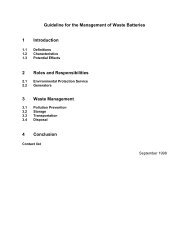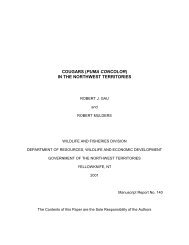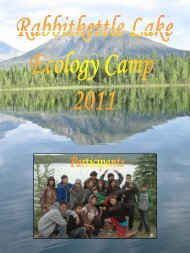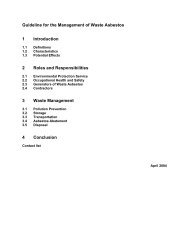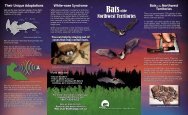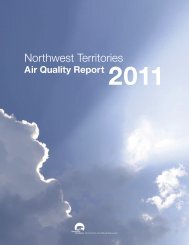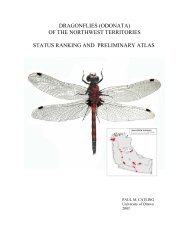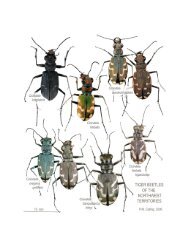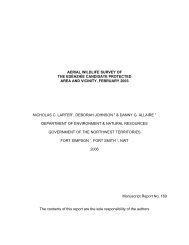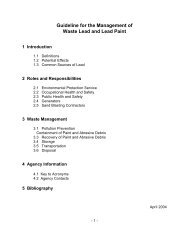Standard Operating Procedure (SOP) - Environment and Natural ...
Standard Operating Procedure (SOP) - Environment and Natural ...
Standard Operating Procedure (SOP) - Environment and Natural ...
- No tags were found...
Create successful ePaper yourself
Turn your PDF publications into a flip-book with our unique Google optimized e-Paper software.
<strong>St<strong>and</strong>ard</strong> <strong>Operating</strong> <strong>Procedure</strong> (<strong>SOP</strong>)<br />
Capture, H<strong>and</strong>ling & Release of Bears<br />
Wildlife Care Committee Primary Author: Dr. Marc Cattet Version 2 - 2011<br />
1. Purpose<br />
<br />
To provide recommendations for the capture, h<strong>and</strong>ling, <strong>and</strong> release of<br />
bears using acceptably humane methods while maintaining minimal risk to<br />
staff <strong>and</strong> allowing appropriate research or management to be conducted.<br />
2. Application<br />
This st<strong>and</strong>ard operating procedure (<strong>SOP</strong>) applies to employees of the<br />
Government of the Northwest Territories (GNWT) <strong>and</strong> any other personnel<br />
involved with the capture <strong>and</strong> h<strong>and</strong>ling of grizzly bears in the NWT.<br />
3. Background<br />
Three species of bears are present in the NWT: Grizzly Bear (Ursus<br />
arctos horribilis), Black Bear (Ursus americanus) <strong>and</strong> Polar Bear (Ursus<br />
maritimus).<br />
<br />
<br />
<br />
The Committee On the Status of Endangered Wildlife In Canada<br />
(COSEWIC) has assessed the three species of bears in the NWT. The<br />
federal Species at Risk Act (SARA) has legislated COSEWICas one of its<br />
key components functioning as advisory body to the Federal government.<br />
The law gives COSEWIC the m<strong>and</strong>ated responsibility for assessing the<br />
biological status on Canadian species in detail, <strong>and</strong> to provide the basis<br />
for the wildlife protection <strong>and</strong> recovery measures spelled out in the rest of<br />
the SARA.<br />
Species can be listed either as<br />
Extinct: a wildlife species that no longer exists.<br />
Extirpated: a wildlife species that no longer exists in the wild in<br />
Canada, but exists elsewhere.<br />
Endangered: a wildlife species that is facing imminent extirpation or<br />
extinction.<br />
Threatened: a wildlife species likely to become an endangered<br />
species if nothing is done to reverse the factors leading to its<br />
extirpation or extinction.<br />
Special Concern: a wildlife species that may become a threatened<br />
or an endangered species because of a combination of biological<br />
characteristics <strong>and</strong> identified threats.<br />
The national status of grizzly bears in Canada was assessed by<br />
COSEWIC in May 2002 (<strong>and</strong> last reviewed in November 2004) as “Special<br />
Concern”. Reasons for this designation included concern for the potential<br />
of exp<strong>and</strong>ing industrial, residential <strong>and</strong> recreational development into<br />
grizzly bear habitats across the country, habitat <strong>and</strong> population<br />
fragmentation occurring in the southern part of the grizzly bear‟s range in<br />
2



